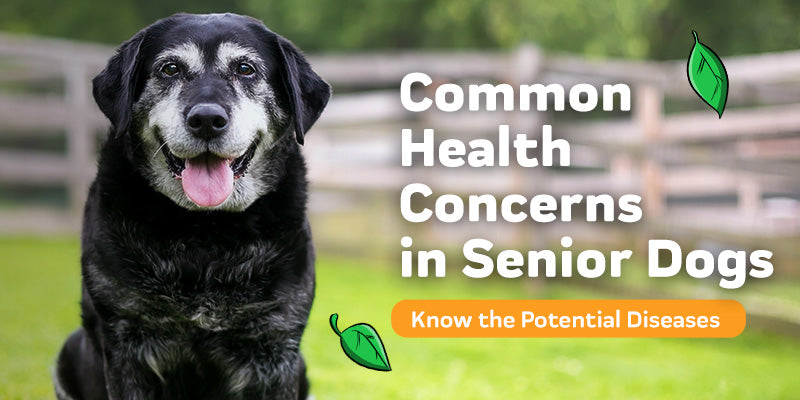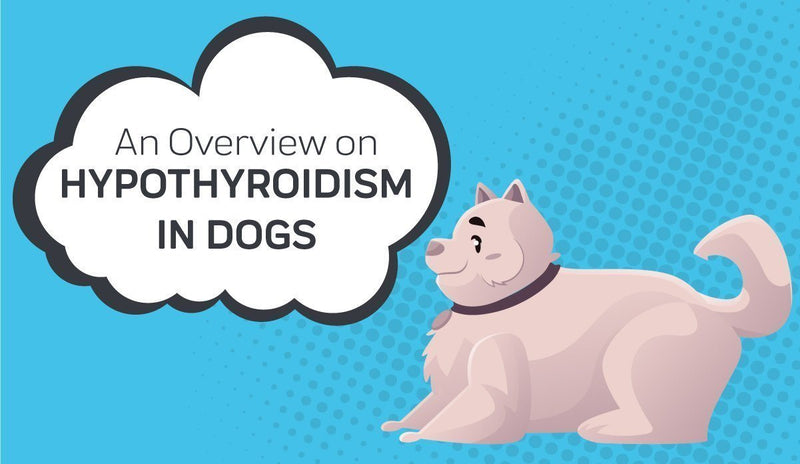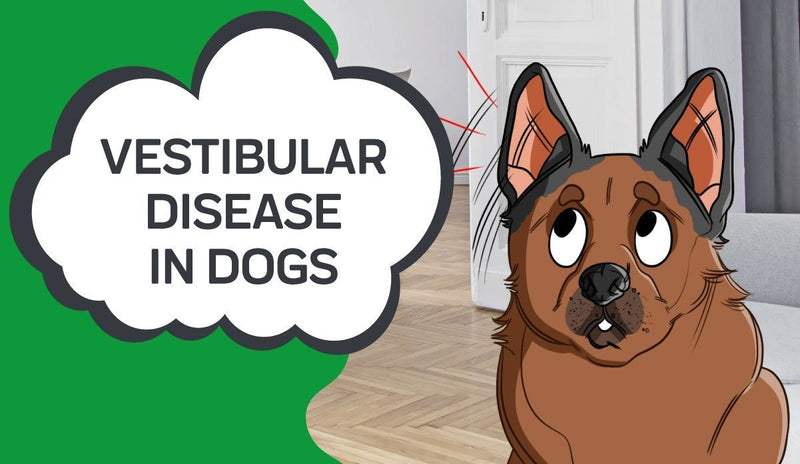- Megaesophagus in Dogs: What is it?
- Megaesophagus: What causes it?
- Additional Conditions
- Megaesophagus Dog Breeds
- Megaesophagus in Dogs: What are the symptoms?
- Dog Regurgitation
- How to Diagnose Megaesophagus
- Megaesophagus: How do you treat it?
- Dogs with Megaesophagus: What is their prognosis?
What is megaesophagus? Megaesophagus involves a food regurgitation condition that’s typical in cats, humans, dogs, and horses. Without correct treatment and management, Megaesophagus in dogs—additionally called “Mega E”—may be deadly.
If your veterinarian has diagnosed your puppy or dog with Megaesophagus, it is vital that you know that it’s possible to treat and manage the condition. But, you ought to know, it likely will require a change in lifestyle for you and your dog. Megaesophagus dogs still can live a quality and happy lives with the support, help, and care of their owners.
What is Megaesophagus in puppies or dogs? What causes the disease and how is it treated? Read further for an in-depth, complete guide on Megaesophagus, as well as how it’s possible to help your dog.
Megaesophagus in Dogs: What is it?

What is megaesophagus in dogs? As aforementioned, megaesophagus is a food regurgitation condition involving an enlarged esophagus in dogs. Dogs that have Megaesophagus have a hard time swallowing, meaning that water and food can’t correctly travel to the tummy.
The biological process is referred to as esophageal motility. And believe it or not, the esophagus comprises of many nerves. As there’s food inside the mouth, the nerves within the esophagus send a signal to your brain, letting it know that it must swallow.
Megaesophagus, unfortunately, is far from a simplistic disease. Indeed, it’s among the most common regurgitation causes in pets. Megaesophagus also is linked to additional conditions and disorders of the esophagus. Some diseases may cause the esophagus to dilate, as well as lose some motility. As esophageal motility is nonexistent or reduced, it then causes fluids and food to accumulate inside the esophagus, which then can lead to vomiting and/or regurgitation.
Megaesophagus may cause some fairly severe problems, like aspiration, food regurgitation, and pneumonia, if not correctly managed.
Megaesophagus: What causes it?
Even though Megaesophagus has been researched by vets, researchers, and scientists for years, the precise cause of the disease is not completely understood. Megaesophagus in canines may be both acquired and congenital. The congenital kind is inherited at birth, and the acquired kind might occur later within a canine’s life.
Initially, congenital Megaesophagus becomes apparent as kittens and puppies are weaning off of their mom’s milk and start on solid food and water. Acquired Megaesophagus may affect canines of any age.
What is most challenging about correctly diagnosing the disease is that it might be confused with additional likewise conditions. There actually are numerous underlying causes and secondary conditions affecting the esophagus and stomach, which causes dog aspiration pneumonia and regurgitation.
Some of those likewise disease and conditions may be caused by these:
- Ingesting or being exposed to numerous toxins
- Hormonal disease (like Addison’s disease)
- Serious inflammation inside the esophagus
- Foreign body or object that blocks the esophagus (like part of a dog toy, scar tissue, tumor, lumps, or an additional item)
- Trauma that affects the spinal cord, brain, nervous system or the stomach
- Disruption between esophagus muscles and nerves
Additional Conditions
Megaesophagus may be secondary to additional diseases like Addison’s Disease, Thyroid, Myasthenia Gravis and additional Neurological disorders.
Below we list a few other conditions affecting the esophageal motility and esophageal function, like Megaesophagus:
Persistent Right Aortic Arch
A condition affecting the esophageal functionality in some cats and dogs is Persistent right aortic arch. It’s a congenital condition involving an irregular development of the blood vessels close to the heart. The abnormality places pressure upon the esophagus and prevents food from passing through and inside the stomach, causing regurgitation and additionally aspiration pneumonia. Surgery often is the best method of correcting this, particularly if dogs are young.
Achalasia (Cricopharyngeal Dysphagia)
An additional condition affecting the esophagus is referred to as Cricopharyngeal dysphagia. The condition often is related to Cricopharyngeal achalasia, affecting the esophageal sphincter, and preventing it from opening and relaxing. In turn, the condition keeps food from passing through your esophagus and inside the stomach. Even though rare, Cricopharyngeal achalasia is a very dangerous disease which may lead to aspiration pneumonia, malnutrition, lung infections, and ultimately death, if left neglected.
Hiatal Hernia
Hiatal hernias is another potential congenital condition. Hernias are when a part of the body takes over one other part. The condition involves a portion of the tummy pushing through the diaphragm’s opening, which prevents food from entering the tummy. Oftentimes, a hiatal hernia affects dogs less than one-year-old. But a hiatal hernia may occur in virtually any age, particularly as a result of trauma. The most typical breeds which are predisposed to the condition include the English Bulldog and Chinese Shar-Pei.
GDV (Gastric Dilatation-Volvulus)
GDV is one other severe life-threatening disease for canines. Typically, the condition is brought about as a dog overeats or eats large meals. It’ll cause so much dilation inside the stomach that it prevents gas and food from passing. In turn, pressure in the stomach becomes so intense that it may cause some fairly severe problems.
Some problems which may arise from this condition involve these:
- Inhibited normal breathing and impaired lung functions
- A breakage or rupture in the stomach’s wall
- Lack of blood flow to the lining of the stomach
- Preventing correct blood flow from the heart over to the abdomen
Megaesophagus Dog Breeds
Indeed, some breeds are more vulnerable to contracting this condition than other ones.
History has proven that the most typical breeds involve these:
- Pug
- Dachshund
- Miniature schnauzer
- Siamese cats
- Labrador retriever
- Greyhound
- Chinese Shar-pei
- Newfoundland
- German shepherd
- Wire Haired Fox Terriers
- Irish Setters
- Great Dane
Megaesophagus is more typical in canines than felines. Congenital Megaesophagus seems to be hereditary in miniature schnauzers and wire-haired fox terriers.
Megaesophagus in Dogs: What are the symptoms?
Disease severity, furthermore, may vary from dog to dog. Mega E may have a focal or mild motility effect on the esophagus of a dog, or the whole esophagus might be dilated and poorly function. Your dog’s general appearance probably won’t change, whatsoever. The majority of folks can’t tell just by looking at a canine that she or he has Megaesophagus. It’s why most vets will suggest that a dog that has this condition use a specialized distinguishable collar to alert family, friends, or passersby within a dog park.
The most obvious and common megaesophagus dog symptoms is vomiting undigested food or regurgitation.
Some additional typical megaesophagus symptoms may include these:

- Fever
- Bad breath
- Nasal discharge
- Gurgling sounds
- Muscle weakness
- Signs of pneumonia
- Painful or bulging esophagus
- Excessive coughing
- Difficulty swallowing
- Difficulty breathing
- Refusal to eat
- Weight loss
- Loss of appetite
Dog Regurgitation
Vets, unfortunately, oftentimes misdiagnose Megaesophagus as most of the symptoms look like those of additional gastrointestinal issues and problems, as we described above. Also, clinical signs and symptoms of Megaesophagus are amazingly like the ones of Myasthenia Gravis -- a neuromuscular disorder which oftentimes affects the esophagus.
Aspiration pneumonia is one other condition that’s oftentimes a severe side effect and secondary condition of Myasthenia Gravis and Megaesophagus. Aspiration pneumonia may occur as a dog’s lungs become inflamed because of tiny bits of undigested food, constant regurgitation, or vomiting.
Overall, if your pup is showing clinical symptoms and signs of either Myasthenia Gravis or Megaesophagus, it is vital to monitor her or him carefully and contact your vet as soon as you can.
How to Diagnose Megaesophagus
If your pup is showing indications of Megaesophagus or pneumonia, the two might be associated. Overall, a trip or call to the veterinarian is in order. The vet will know precisely where to begin to officially diagnose the dog.
Numerous factors may cause dog vomiting and regurgitation, which makes it hard sometimes to pinpoint the precise cause. Thereby, a barium esophagram also may be issued to figure out the cause of dog vomiting or regurgitation. A barium test for dogs includes feeding the dog “barium”, or metallic compound that is visible in X-rays. The compound assists in making the interior part of the stomach and esophagus more visible to vets.
Most Megaesophagus cases may be found by taking X-rays. Generally, the x-rays will show a dilated esophagus that’s caused by an accumulation of fluid, food, and excessive gas inside the esophagus.
The veterinarian might suggest a Tensilon test or a blood test in addition to the X-ray to test for Myasthenia Gravis, as the symptoms and signs of this condition are like the ones of Megaesophagus. The Tensilon test or blood test will indicate the presence of the ACHr antibody-- a typical Myasthenia Gravis link.
Some additional potential diagnostic tests which might be done involve an endoscopy that evaluates the esophagogastric junction or esophageal sphincter. Those tests will discover if your pup has another kind of swallowing disorder.
Megaesophagus: How do you treat it?
Within some instances, it’s possible to treat this disease with a surgical myotomy. A procedure is well-known as a Laparoscopic Heller myotomy. The treatment involves making a small cut at the bottom part of the esophageal sphincter to alleviate the dysphagia. One other kind of treatment involves a laparoscopic myotomy that involves a tiny incision inside the abdomen, big enough to put in a scope to see inside a dog’s tummy.
The majority of dogs that go through those treatments are in the secondary phase of Megaesophagus, meaning they’re adults. Furthermore, not every canine is an excellent candidate for a laparoscopic myotomy or Laparoscopic Heller myotomy. The veterinarian likely will recommend whether or not the dog makes a good surgical candidate.
Pepcid for Dogs
Vets often will prescribe medicines to assist dogs that have Megaesophagus. The majority of prescriptions involve an acid reducer, like Pepcid for canines. Those medicines also aid in treating esophageal dysmotility that assist the dog in emptying her or his stomach. For pups that wind up with aspiration pneumonia as a consequence of Megaesophagus, their vet often will prescribe meds to aid in clearing the lungs up.
Slippery Elm for Canines
If you like a holistic or natural dog treatment approach, it’s possible to try slippery elm for canines. Slippery elm is a nontoxic, safe, and natural herb that assists in treating stomach issues and additional wounds in animals. Slippery elm has numerous essential nutrients, including these:
- Calcium
- Beta-carotene
- Ascorbic acid
- Healthy fats
- Protein
- Carbohydrates
All these ingredients are critical for the nutrition of your dog, particularly if she or he has been regurgitating food, as well as losing muscle mass and weight loss as a consequence of Megaesophagus. But it may be challenging to provide your pup slippery elm because of its tough texture within its natural form. Therefore, make certain that you offer your furry pal capsules or blend the slippery elm powder into her or his food.
It also is vital to state that slippery elm might interfere with some prescription meds. Therefore, make certain to communicate to your veterinarian your intentions of providing your pup slippery elm. You ought to provide slippery elm to your pup separately from meds.
Bailey Chair for Pups
One thing to do for your furry friend is to monitor and change her or his eating habits. Canines that have Megaesophagus have to consume their food in an upright or vertical position to permit food to pass through their esophagus and inside the tummy without regurgitation. Also, this prevents aspiration pneumonia.
Some might advise using an elevated bowl, but this does not always aid the esophagus in staying in the proper position. One way to do this includes getting a megaesophagus dog chair called a Bailey Chair made for dogs. The bailey chair plans that your pup should remain inside the Bailey Chair for around 20 - 30 minutes after and during feeding time. It’ll allow enough time for the pup’s food to pass through the esophagus then enter into the stomach.
Neck Pillows for Canines
Besides purchasing or building a megaesophagus chair, or Bailey Chair to help your pet with feeding, neck pillows for canines additionally work wonders. Just as it’s vital to keep the dog elevated and in an upright and vertical position while she or he eats, keeping the dog elevated within the evening also is an excellent idea. During the evening or nap, excessive saliva, leftover liquid or food may pool up inside the esophagus that may seep into the lungs and lead to aspiration pneumonia or food regurgitation. You easily can find and buy a neck pillow online or at your local pet shop.
Feeding Your Megaesophagus Dog
Some professionals also suggest feeding your pup more frequent and smaller meals (between 3 - 4 times a day). It’ll prevent the dog from inhaling or overeating her or his food, which additionally prevents food regurgitation. Plus, we suggest soft or wet food. If your pup typically is given dry food, consider turning it to a powder by blending it inside a blender then adding water. The soft consistency is going to make it more convenient for your pup to consume and digest it.
You also can make “meatballs” that have dry or powdered kibble, raw or cooked meat and eggs, canned food, or combination of those foods.
You also can add some additional natural elements to the diet of your dog, which may involve:
- Probiotics
- Slippery elm
- Almond milk
- Coconut milk
- Coconut oil
Locating the best way to feed your pup likely will require a bit of trial and error as not every pup is going to take to a new diet easily. A few pet owners have more luck feeding their furry friends liquid diets than other ones. Overall, as you adjust the dog’s feeding habits and diet, pay attention to their weight. If the dog continuously drops weight, it is time to make some adjustments.
Dogs with Megaesophagus: What is their prognosis?
Unfortunately, there’s a good amount of risk which comes with this disease. The prognosis often is poor, depending upon the pup’s age and complications. If you and the veterinarian don’t treat your pet’s Megaesophagus, poor nutrition, starvation, as well as aspiration pneumonia eventually will lead to death. Additional neuromuscular issues also can develop, which just make matters worse for your dog.
However, there is good news…
Here’s the good news: treatment—both at-home care and veterinary care—will result in the best result for your pup. As aforementioned, there’s a lot it’s possible to do to assist your pup in living more comfortably, like adjusting diets and monitoring sleep and feeding habits. Having a pup with Megaesophagus requires a change in lifestyle.
Overall, the best plan for treatment and care starts with a solid diagnosis. It’s also crucial for family, friends, and other guests who come into contact with the dog on a routine basis to know what Megaesophagus is and how it’ll affect your pet. It’s why we suggest that your pup use a specialized collar or medical tag to indicate it. It also is essential that other people know that they can’t feed your pup water, food, or treats—that also involves sneaking dinner scraps underneath the table!
Living with this condition

It’s a life-threatening disease which may be deadly. But, with the proper commitment and care, your pup still can live a healthy, happy, and long life and extend your megaesophagus dog life expectancy. Caring for and living with a dog that has Megaesophagus certainly can be heartbreaking and difficult. But dedicated, caring pet owners are going to discover that the necessary changes in lifestyle are easy to make.
For more information contact Innovet Pet Products today!
Sources:
Transdermal cannabidiol reduces inflammation
Cannabidiol inhibits paclitaxel-induced neuropathic pain
Cannabidiol in Anxiety and Sleep
A Cross-Sectional Study of Cannabidiol Users
















